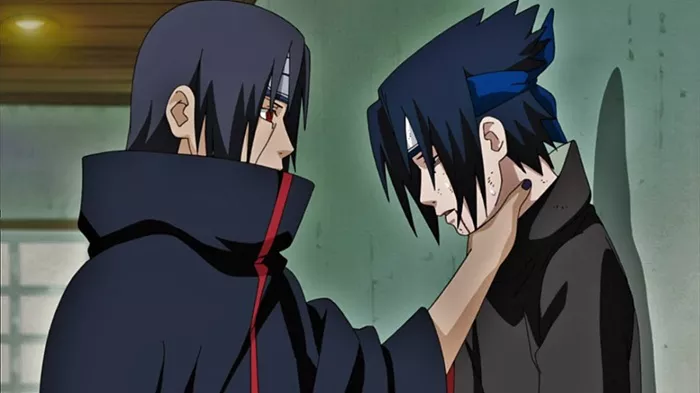The relationship between Sasuke and Itachi Uchiha in the Naruto series is a saga of tragedy, redemption, and profound brotherly love. Itachi, initially portrayed as a villain responsible for the Uchiha clan massacre, ultimately sacrifices himself for the sake of his younger brother Sasuke. This pivotal moment in the series leaves fans questioning whether Sasuke could ever bring Itachi back to life. This article delves into the intricacies of resurrection within the Naruto universe, examining the techniques, lore, and ethical implications surrounding the possibility of Sasuke reviving Itachi.
Understanding Itachi Uchiha
The Enigmatic Elder Brother
Itachi Uchiha is introduced as a mysterious and powerful shinobi, a prodigy from the Uchiha clan renowned for his exceptional intellect and combat skills. His character undergoes a complex evolution throughout the series, transitioning from a perceived villain to a tragic hero burdened by the weight of his clan’s destiny and his duty to protect his younger brother.
The Massacre of the Uchiha Clan: Itachi’s decision to wipe out his clan is revealed to be a calculated sacrifice to prevent a coup d’état and maintain peace in the Hidden Leaf Village.
Sasuke’s Motivation: Itachi becomes Sasuke’s primary motivator, driving his younger brother to seek revenge and grow stronger as a shinobi.
Resurrection Techniques in the Naruto Universe
Edo Tensei (Impure World Reincarnation)
Edo Tensei is a forbidden jutsu developed by Tobirama Senju and later perfected by Orochimaru. This technique allows a user to resurrect the dead by summoning their souls into physical bodies created from sacrificial human vessels.
Mechanics: Edo Tensei requires a DNA sample of the deceased and a living sacrifice. The resurrected individuals retain their personalities and abilities but are under the control of the summoner.
Limitations: The technique can be disrupted if certain seals are released or the caster’s control is broken.
Rinne Rebirth (Rinne Tensei)
The Rinne Rebirth technique, associated with the Rinnegan, allows a user to sacrifice their own life force to revive others. It is a self-sacrificial technique with profound consequences.
Mechanics: The user transfers their life force to revive the dead, resulting in their own death.
Usage: Nagato, also known as Pain, employs Rinne Rebirth to revive the inhabitants of Konoha following his devastating attack.
Other Techniques and Limitations
Other resurrection methods include Kabuto Yakushi’s use of the Reanimation Jutsu and the manipulation of bodies by entities like Black Zetsu. These methods, however, often come with significant limitations and ethical concerns.
Sasuke Uchiha’s Abilities and Potential
The Evolution of Sasuke’s Power
Sasuke Uchiha, Itachi’s younger brother, undergoes substantial growth throughout the series, acquiring powerful ocular abilities that make him a formidable shinobi.
Mangekyo Sharingan: Sasuke awakens the Mangekyo Sharingan, granting him access to potent techniques like Amaterasu and Susanoo.
Rinnegan: Later, Sasuke evolves further by awakening the Rinnegan, unlocking enhanced abilities in space-time manipulation and visual prowess.
See Also: kakashi’s dad
Hypothetical Scenarios for Resurrection
Given Sasuke’s immense abilities, several hypothetical scenarios could be considered for his attempt to revive Itachi:
Learning Rinne Rebirth: Sasuke might theoretically learn Rinne Rebirth, utilizing his Rinnegan to bring Itachi back to life. However, this would necessitate sacrificing his own life, which goes against his mission to protect the village and his growth as a character.
Edo Tensei: Sasuke could attempt to use Edo Tensei to summon Itachi’s soul back into a physical vessel. This would resurrect Itachi in a controlled form, albeit with potential ethical and practical implications.
Collaborative Efforts: Sasuke could potentially collaborate with allies who possess knowledge of resurrection techniques or advanced medical ninjutsu, exploring unconventional methods to revive Itachi.
Ethical and Moral Considerations
Respecting Itachi’s Sacrifice
Itachi’s sacrifice and his wishes for Sasuke to live freely and without the burden of revenge are central themes in their relationship. Reviving Itachi would potentially undermine these profound moments of character growth and redemption.
Impact on the Shinobi World
Resurrecting a figure as influential as Itachi could have far-reaching consequences for the delicate balance of power within the shinobi world. It could also reignite conflicts and lead to unforeseen ramifications.
Personal Growth and Acceptance
Sasuke’s journey is about acceptance, redemption, and forging a new path for himself. Resurrecting Itachi could hinder Sasuke’s growth and perpetuate cycles of vengeance that he seeks to transcend.
Narrative Implications and Alternatives
Narrative Integrity
From a storytelling perspective, the narrative integrity of “Naruto” and “Naruto Shippuden” hinges on characters’ growth through trials and tribulations. Reviving Itachi would potentially detract from the themes of loss, sacrifice, and personal redemption that define the series.
Honoring Itachi’s Legacy
Instead of focusing on resurrection, Sasuke can honor Itachi’s legacy by upholding his brother’s values, protecting the village, and fostering peace. This approach allows Sasuke to grow as a leader and mentor, guiding future generations toward a brighter future.
Conclusion
The question of whether Sasuke can revive Itachi in the “Naruto” universe is fraught with complexity, touching upon themes of sacrifice, redemption, and the consequences of wielding great power. While Sasuke possesses extraordinary abilities, including the formidable Mangekyo Sharingan and Rinnegan, the ethical and narrative considerations surrounding resurrection techniques like Edo Tensei and Rinne Rebirth present significant challenges. Ultimately, Sasuke’s journey is one of personal growth and acceptance, driven by his brother’s enduring legacy and the lessons learned from their tumultuous relationship. As fans continue to reflect on the profound bond between Sasuke and Itachi, their story remains a testament to the enduring themes of love, sacrifice, and the pursuit of peace in the world of shinobi.

